Who is Ansel Adams?

Born in San Fransisco, 1902, Ansel Adams was a famous American photographer in the 20th century, most known for his landscape photography capturing Americas natural beauty. His photoshoots specifically were devoted to capturing the remaining fragments of untouched American landscapes and preserved wilderness. Mainly taken in national parks and areas of remaining beauty in the American West, Ansel Adams first captured his signature style of landscape in Yosemite National park. After summating a mountain peak carrying a heavy camera, tripod and additional gear, he reached a place called the Half Dome this is where he would first use ‘visualisation’, this started of his career in photography leading on to him creating numerous famous photographs such as:
‘The Tetons and Snake River, Grand Teton National Park, Wyoming, 1942’
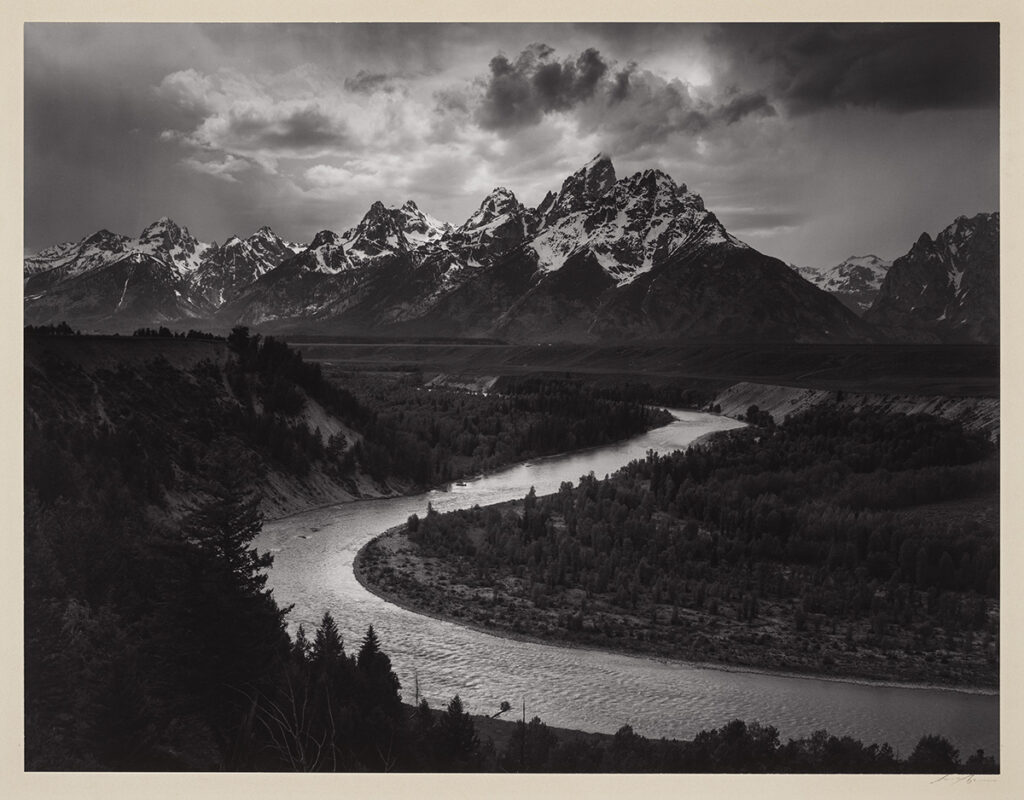
‘Denali and Wonder Lake, Denali National Park and Preserve, 1948’
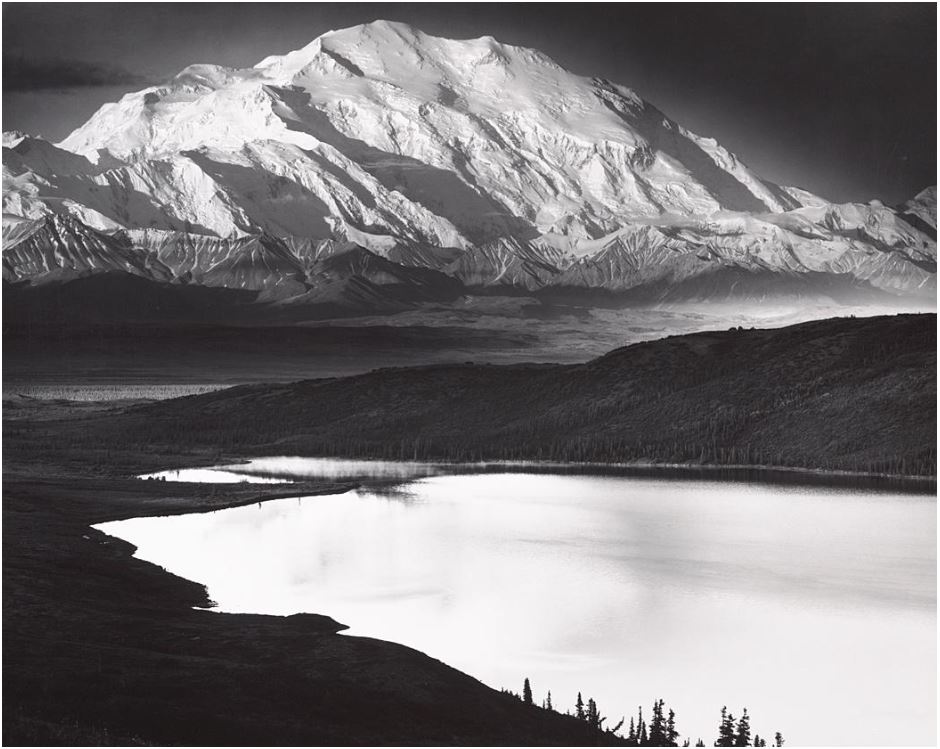
Clearing Winter Storm, Yosemite National Park, c 1937
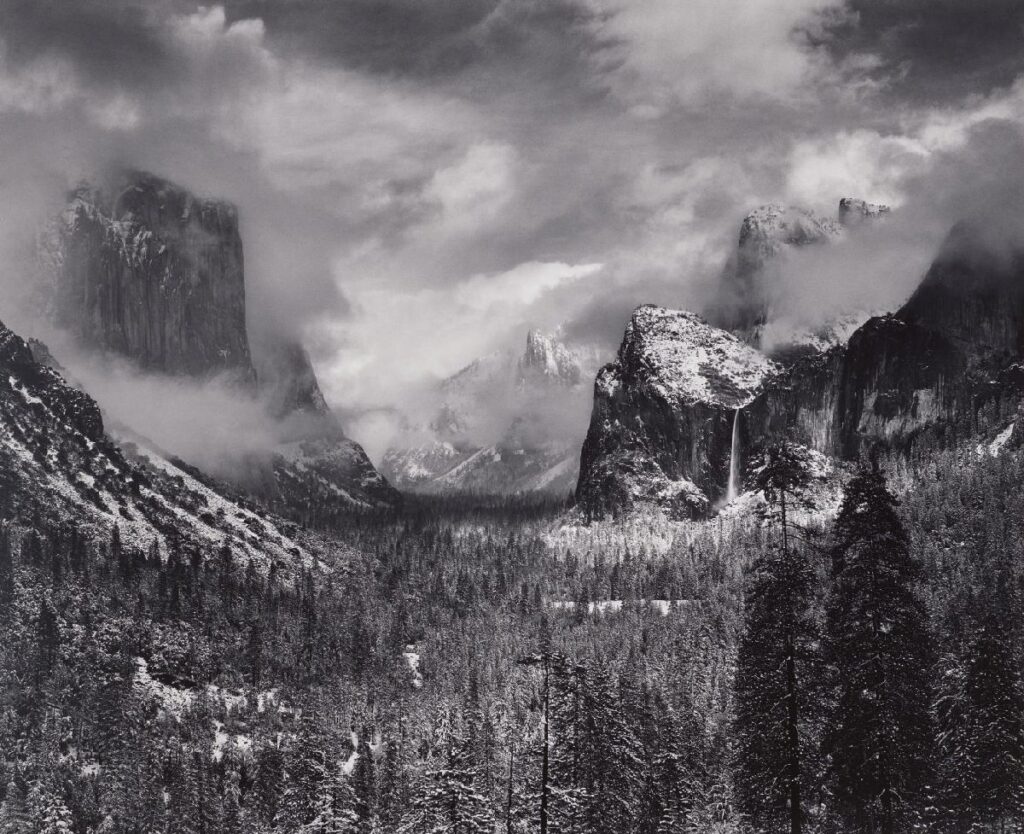
His love for the American West came from his love for nature, quoted by Adams the national parks he visited such as Yosemite and Sierra Nevada were “Coloured and modulated by the great earth gesture”. His first trip to Yosemite, in 1916, started his love for the place and his passion for photography. It was there his father gifted him his first camera, an Eastman Kodak No.1 Box Brownie.
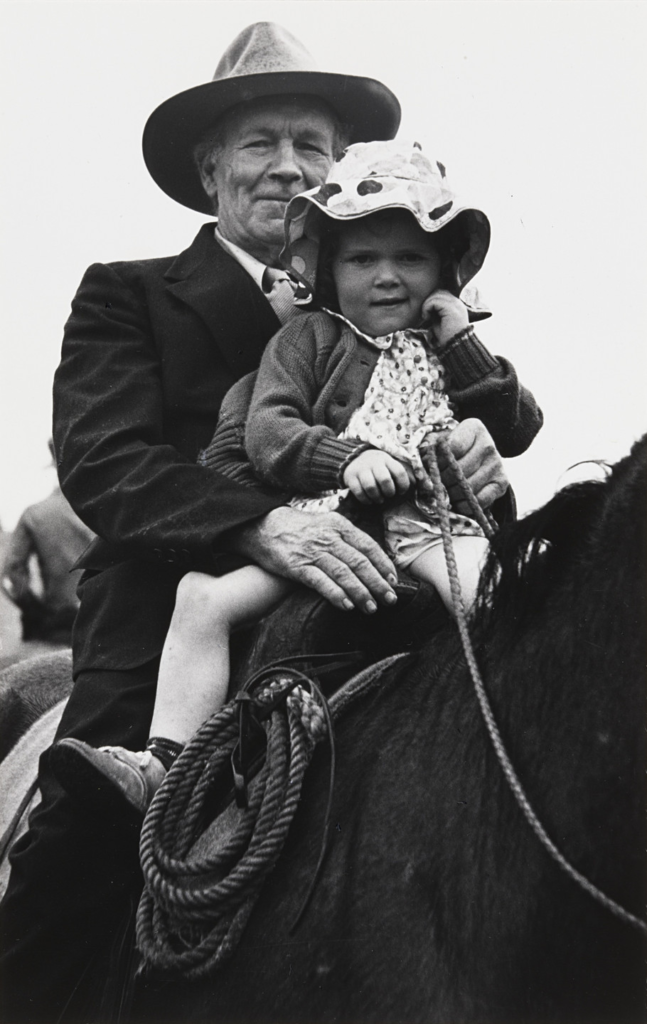
What is Visualisation?
Quoted by Ansel Adam’s Visualisation is “to see (an image) clearly in the mind prior to exposure, a continuous projection from composing the image through the final print”. Put simply it is the concept of being able to see the scene prior to shooting and using your mind to make the that scene as a final product. In addition to using visualisation, Ansel Adam’s alongside his fellow photographers in their group F/64 developed the ‘Zone System’.
What is the Zone system?

Using a chart ranked from numbers 0 to 10, this could be used to determine which areas of the photograph would fit into these zones of tone. Combined with visualisation this is helpful in deterring what the image would turn out to look once printed from film.
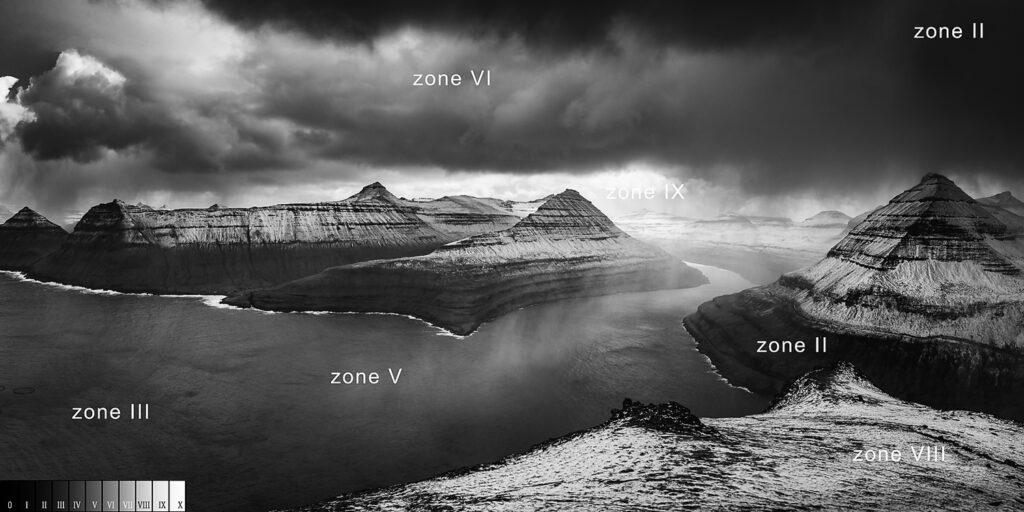
Using a Kodak Brownie Box Camera, Adams carried two filters: One red, one yellow, these where used to pick more detail in tone on certain parts of the picture. For example, the Yellow made the brown hillsides and tree bark for visual, standing out better, the red was to darken the sky and create that dramatized appearance.

Group F/64 –
Being an environmentalist and conservationist, he helped found the group F/64. This group consisted of photographers advocating “pure” photography, this consisted favouring a sharp focus and the use of full tonal range within an image. This group saw the invention of the zonal system and produced some other often overlooked photographers who’s work slowly grew into the spotlight like Ansel Adams. Some of these include Edward Weston, Dorothea Lange and Imogen Cunningham. The name of the group stemmed from a suggestion by Adams as a nod to the F-stop there photos often used.
Edward Weston, like Adams has now become far more recognisable for their work, this can been with his still life pieces of vegetables in dramatic detail of visuals.
(‘Cabbage Leaf’, 1931)
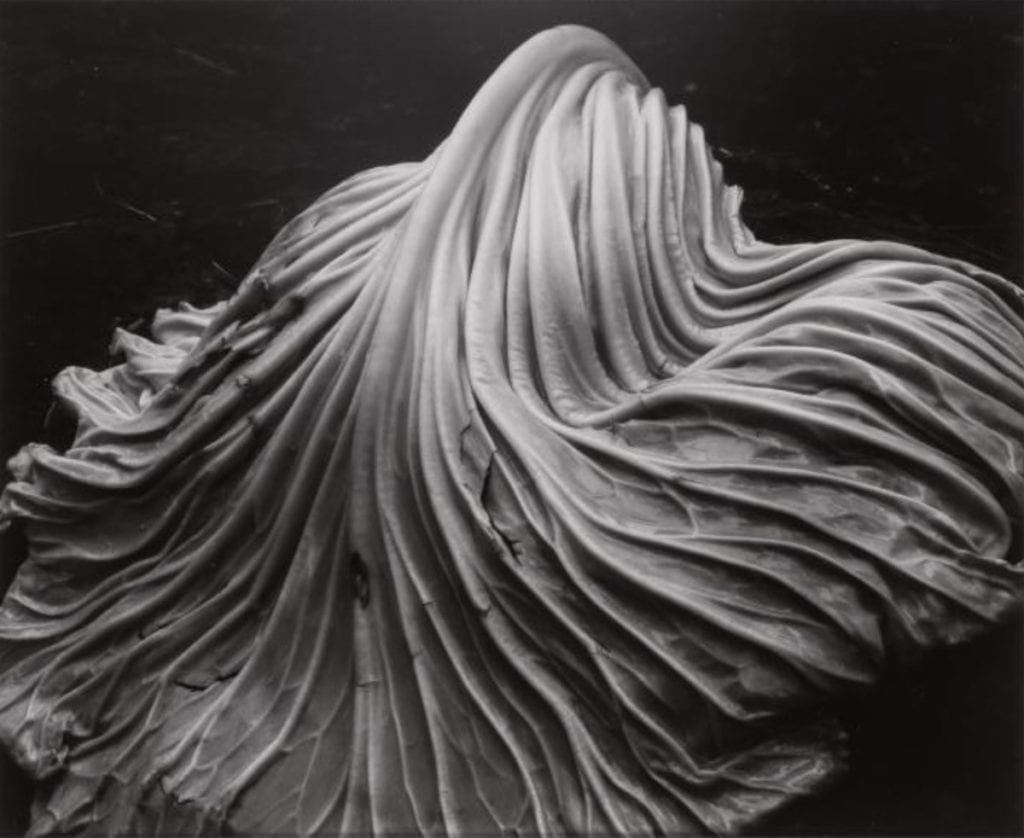
“I can’t tell you how swell it was to return to the freshness, the simplicity and natural strength of your photography … I am convinced that the only real security lies with a certain communion with the things of the natural world“
— A letter from Edward to Ansel in 1936
Adams links to Romanticism –
Composing some of the 20th century’s greatest pieces of landscape photography, Ansel Adams can be said to have modernised transcendentalism, the idea that society and its institutions spoil the purity of the individual, with this in mind it can also be stated his work brought about the American revision of European Romanticism from the 18th and 19th century through the use of photography albeit in a visual composition similar to the paintings from the past.
In comparison to the paintings from the Romanticism Period, it is more clear to see where Ansel Adams possibly took inspiration from with his photoshoots.
Ansel Adams (Cathedral Peak and Lake, 1938)

Wilhelm Bendz’s Berglandschap (mountain landscape, 1831)
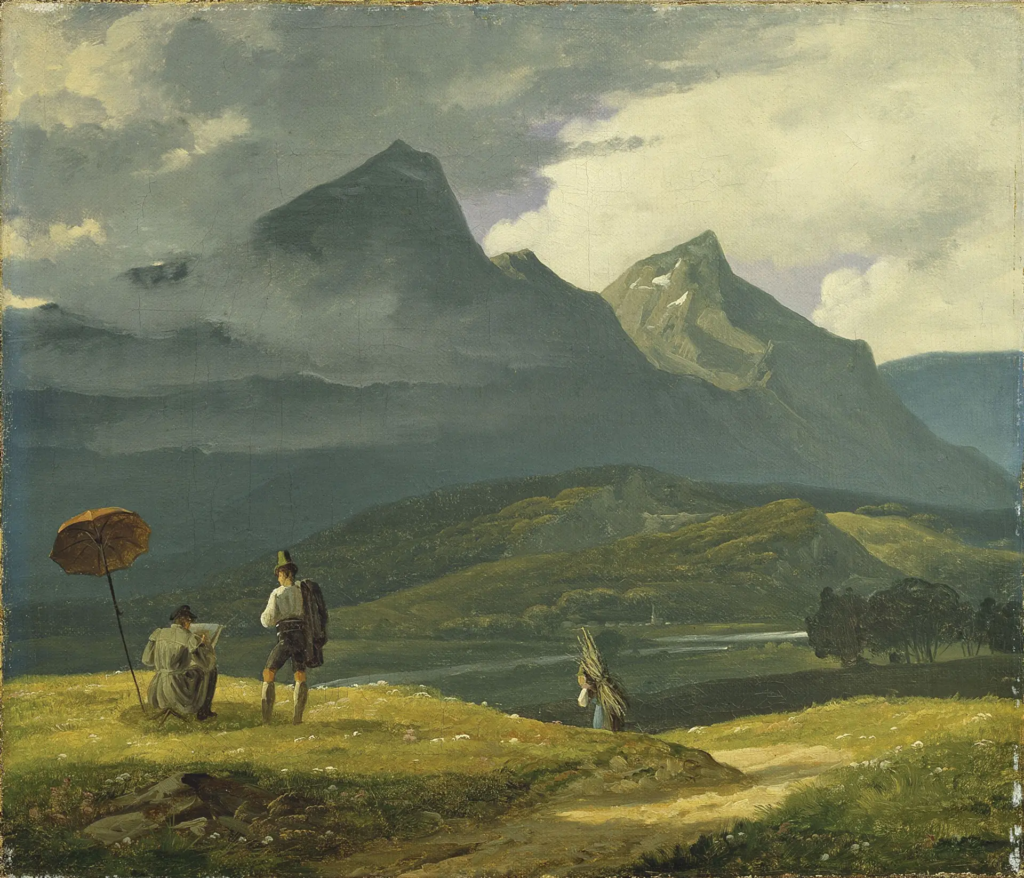
Inspired by Alfred Stieglitz, who he met in 1933, and held a one-man exhibit for in 1936, the influence of his work is visible when shown in comparison to each other.
(Stieglitz)
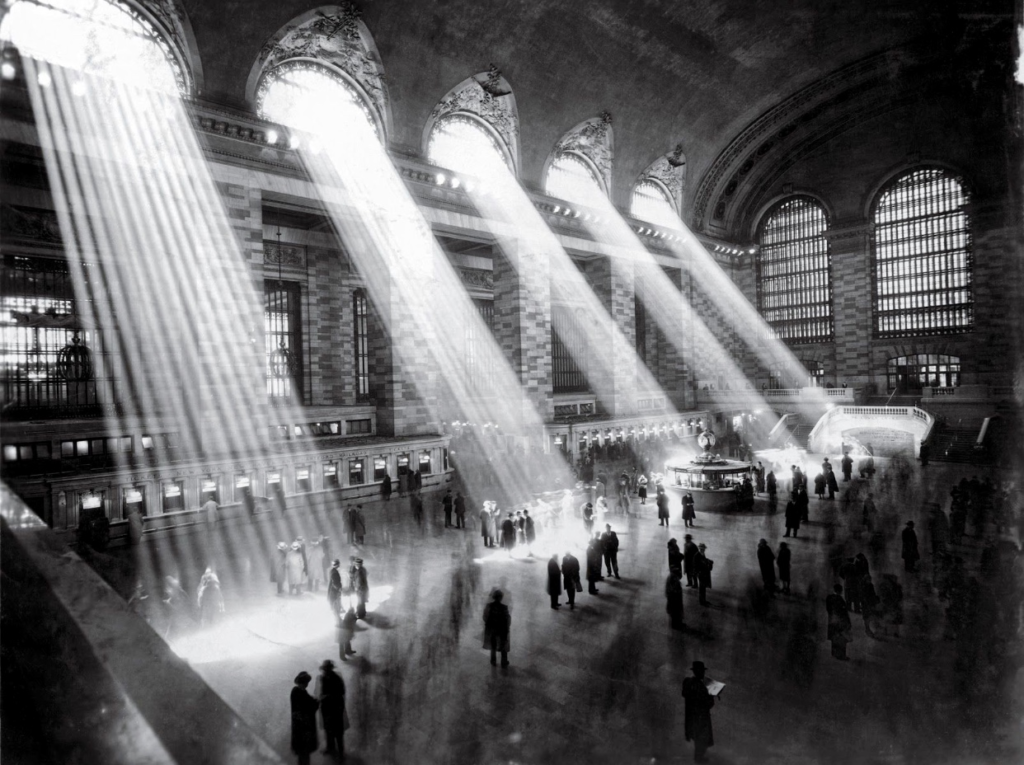
(Adams)
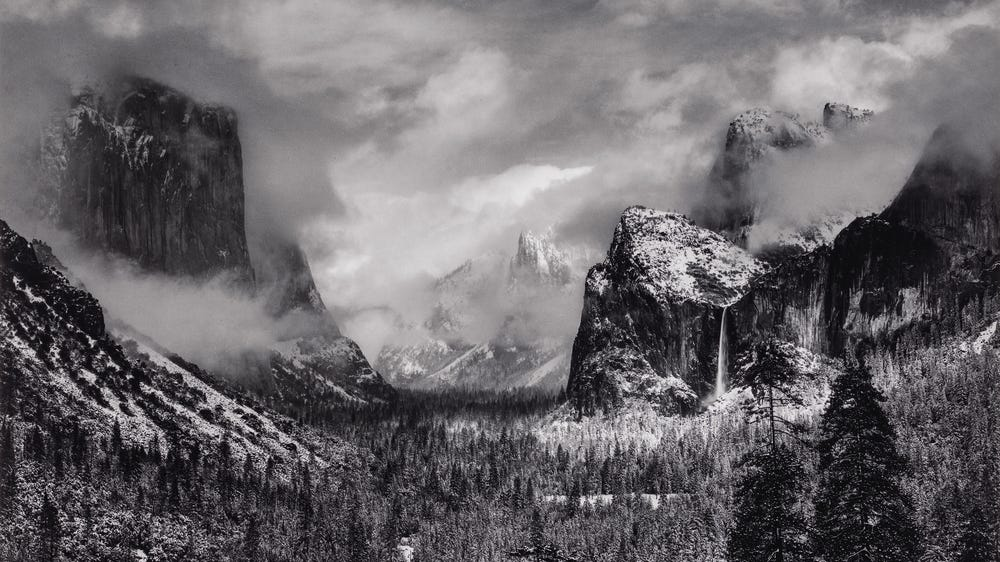
Image analysis –
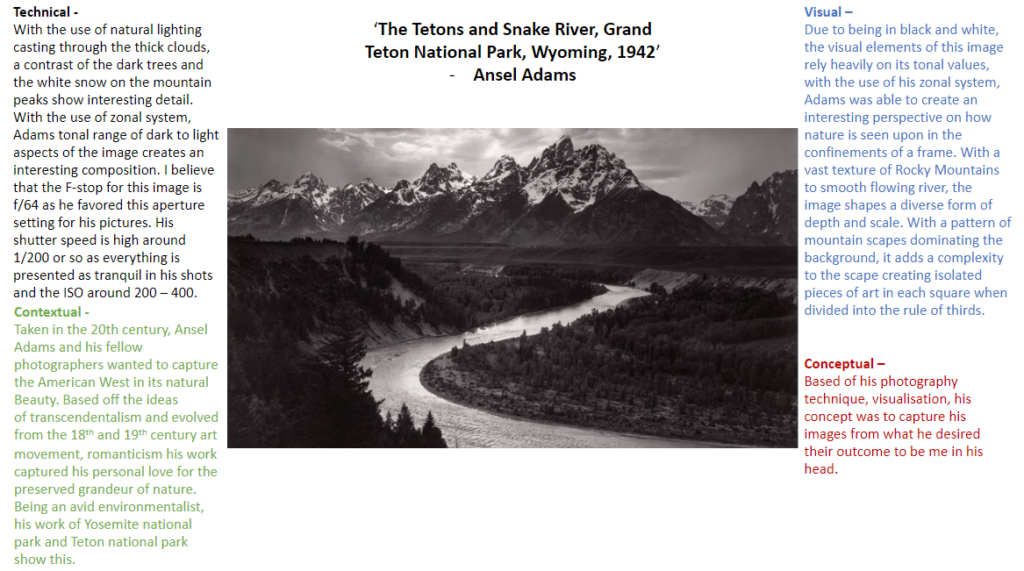
In response to looking at Ansel Adams work, I will use his technical skills to help improve upon my landscape photoshoots and try to create an interesting set of photos based similarly to his visual style.
